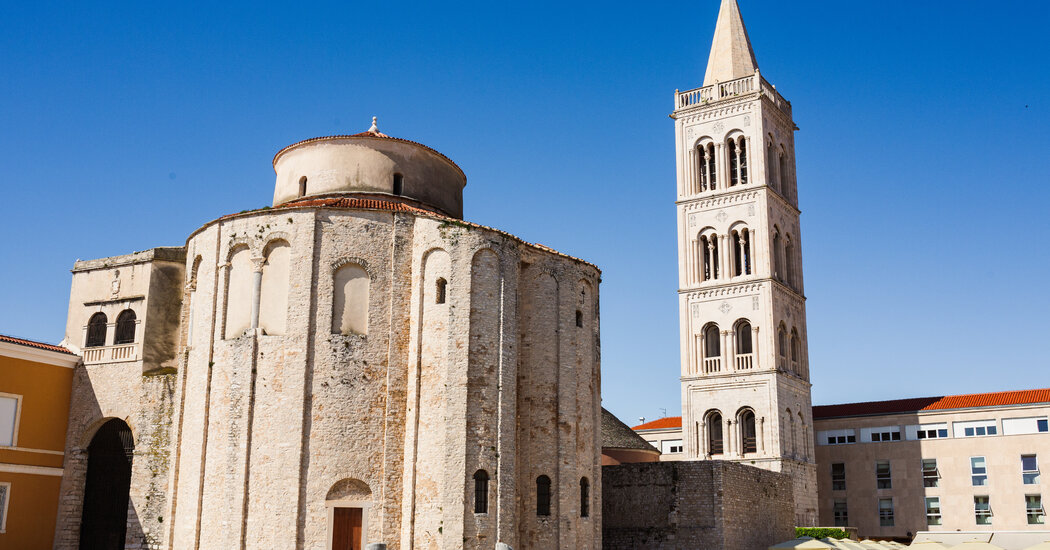A nearly two-mile walk circumnavigating Zadar’s Old Town is a journey across a timeline that spans nearly every stage of Croatian history. And it’s a long history, dating back to the 9th century B.C., when the Liburnians first settled this peninsular spit of land on Croatia’s spectacular Dalmatian coast.
Start your stroll on the northwest corner of the peninsula at the Morske Orgulje, or Sea Organ: a set of 35 pipes spread under a 230-foot section of the city’s seaside promenade, known as the Riva. Awarded the 2006 European Prize for Urban Public Space, the Morske Orgulje plays beautifully discordant melodies as the Adriatic laps the stone and pushes air through the pipes beneath — converting the walkway into an invisible, ethereal orchestra.
After the tidal concert, continue past the “Greeting to the Sun” installation (you’ll have a chance to linger there at the end of your walk) and around the Old Town’s northeast corner.
Continue southeast, walking along Zadar’s harbor-facing walls, constructed and reinforced between the 12th and 17th centuries as part of the Venetian Republic’s Adriatic defense network.
Before moving on, stop at the Garden Lounge, which sits atop the fortifications with views of ferries shuttling passengers to nearby islands, for a local Garden I.P.A. (3.50 euros, or about $3.75), then walk along the walls until you reach the City Bridge on your left. Take a right through the Nova Vrata, or New Gate — an archway built during Italy’s pre-World War II occupation — and into the pedestrian-only Old Town.
Make your way to People’s Square. The city’s cafe-strewn main piazza is the site of Town Hall and is defined, on its western edge, by the street known locally as Kalelarga, Zadar’s main thoroughfare since the Romans laid its grid in the first century B.C.
Hang a left on the ancient avenue’s southern extension, Elizabete Kotromanić Street, which changes names three times as you pass the coral-colored Baroque Church of St. Simeon, walk under a solitary pillar from Zadar’s Roman Forum, and cross the expansive Petar Zoranić Square, where you can view layers of history — Roman and medieval — frozen in time under glass.
Go right onto Trg Pet Bunara Street, which leads to Five Wells Square. Guarded by the 85-foot Kapetanova Kula (Captain’s Tower), the wells provided the city water during a 16th-century, Ottoman Empire siege. Climb the stairs to the tranquil Queen Jelena Madijevka Park, established in…
Click Here to Read the Full Original Article at NYT > Travel…
